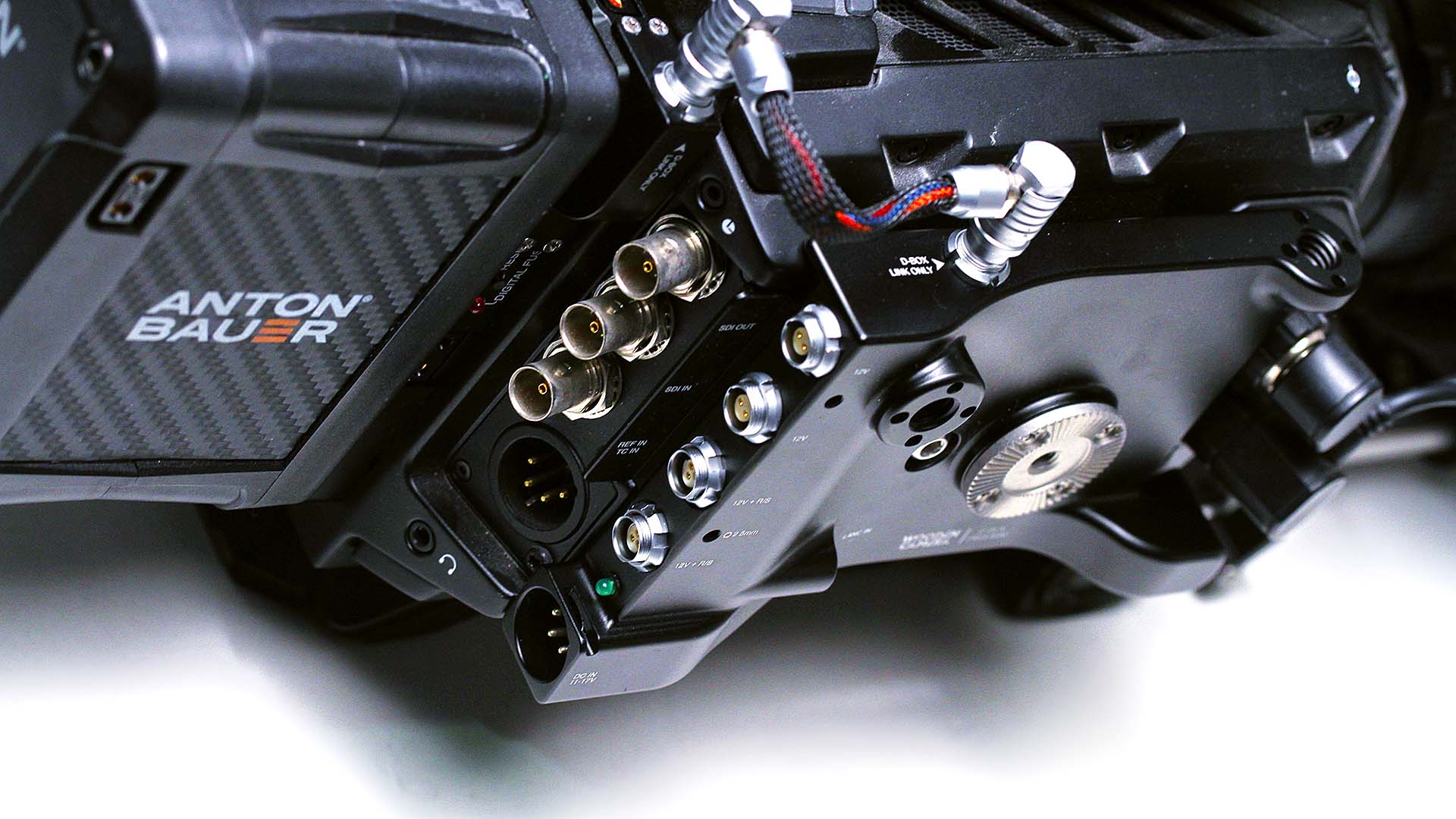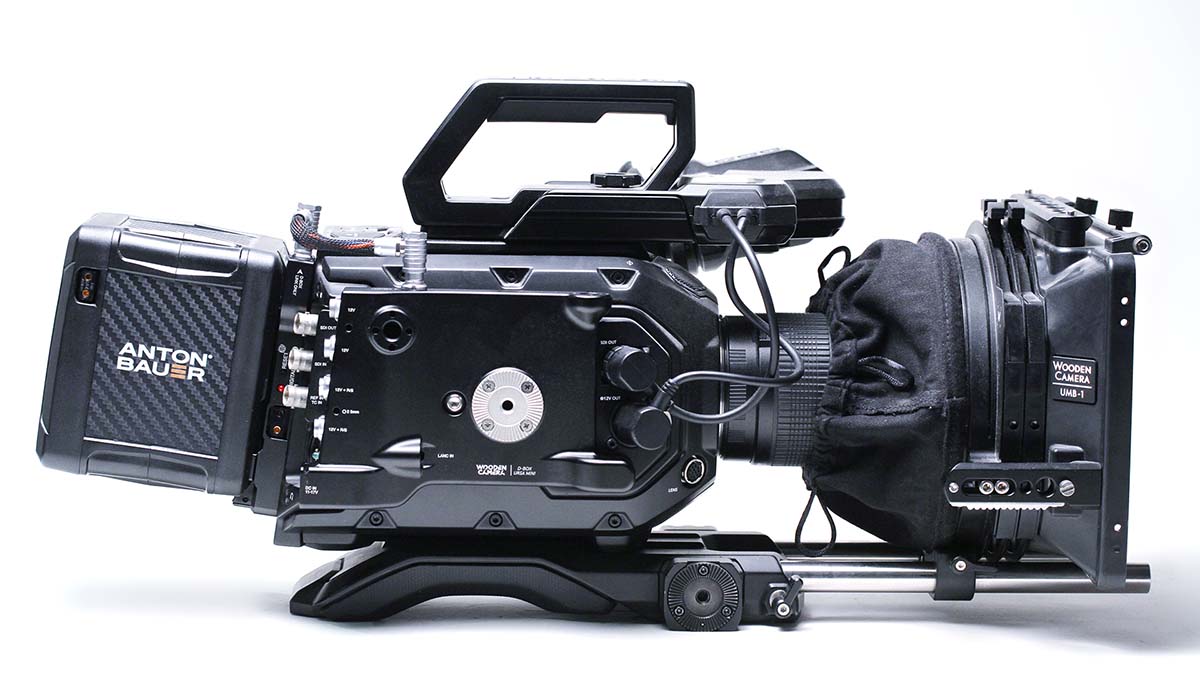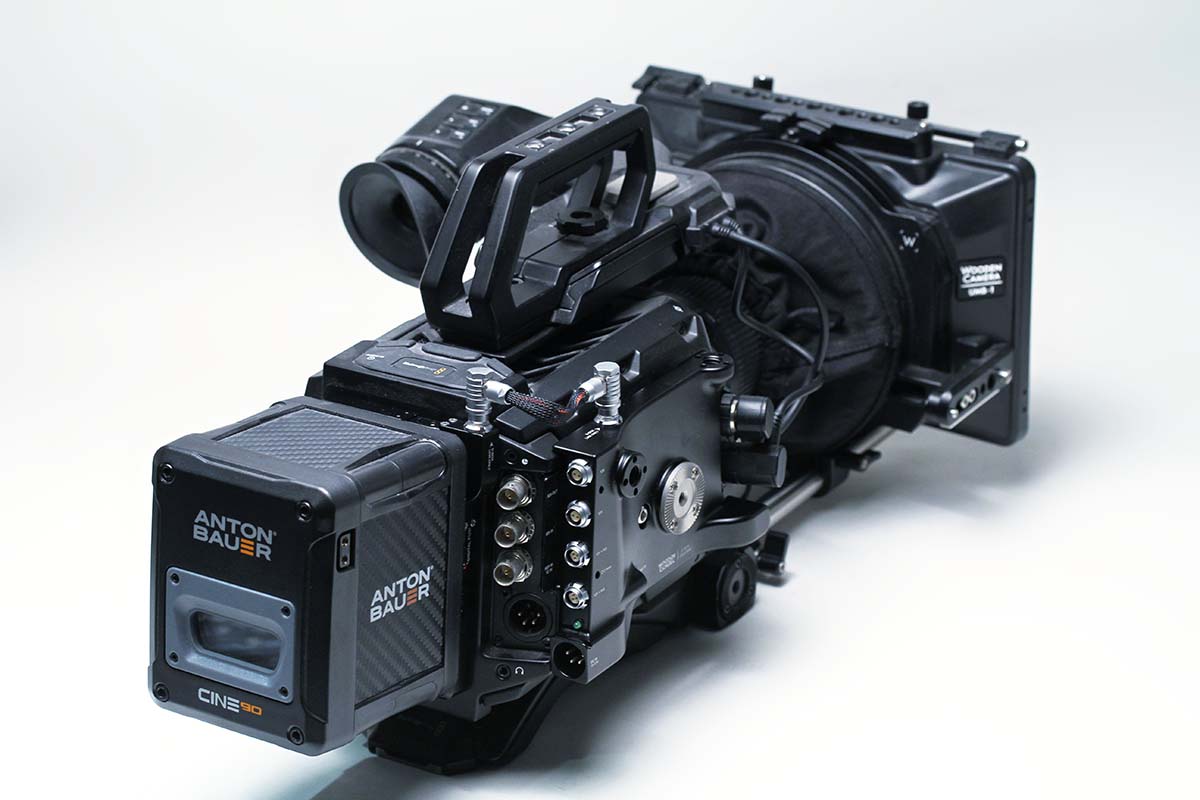
Phil Rhodes takes a good look at Wooden Camera's D-Box Plus, which can be used with Blackmagic Design's URSA series of cameras.
People add things to cameras because there are many varieties of production technique, but comparatively few varieties of camera.
Wooden Camera has long been involved in exactly that kind of accessorisation, offering a huge variety of clamps, mounts, plates, adaptors and converters. The company already offers a smaller URSA Mini donkey box which was well-received. Still, Blackmagic’s camera is an interesting target for accessorisation, being aimed somewhat at cinema-style work right out of the box, though there are certainly things that might easily frustrate traditional camera assistants.
The option I'm looking at here, the D-Box Plus, is compatible with both 4.6K and 12K URSAs. The first D-Box we examined was entirely contained in a half-inch-thick battery plate and thus mounted solely on the back of the camera. The D-Box Plus is an expanded design in two parts which mount on the rear and right-hand side, connected by a short cable.

D-Box Plus power and connectivity
There are a few changes in capability between the two. The pair of Fischer connectors include both Arri-compatible power and run-stop wiring, most often used to interface a remote focus device incorporating run-stop control. The Fischer power is upconverted to 24V on the original D-Box, but left at 12V on the Plus version. This is probably a sensible change; accessories that really require 24V power are reasonably rare and focus systems working with a difficult, high-torque lens might easily exceed the 2A the converter could supply.
The D-box Plus lacks a USB output, which is a shame; it feels like it’s reasonably common to have at least something on a camera that requires 5V power, if only the first AC’s phone. Perhaps market research indicates otherwise. We do benefit from an additional unregulated (though fused) D-tap; the original had one, the D-Box Plus has two, though BNCs might get in the way of the right-hand one. FIXME the D-taps, usefully, remain powered both from battery and external DC power, and the plate provides full hotswap capability. This is unusual and extremely welcome; gold or V-mount option are available.
Perhaps the most visible upgrade, made possible by the split design, is the full-size, 4-pin XLR. It sits below a green LED indicating external power present, which is a nice confidence addition in itself. Not to gush excessively about a power connector, but this thing really is about convenience, and the full-size connector makes a lot more sense than using a miniature connector and an adaptor cable. Adaptor cables using unusual connectors can be mislaid or damaged and cause major inconvenience because they’re hard to replace. It’s actually worth reinforcing this for the designers of the world: if the choice is a smaller, neater product with unusual connectors, or a slightly larger design with common connectors, use the common connectors and tolerate the increase in size. The D-Box Plus gets this right.
There’s also a LANC input, which the first D-Box we saw lacks (it has an output only, to implement the run-stop control). What someone might do with an external LANC input isn’t really clear, but there isn’t really an established electronic control protocol for professional cameras and LANC is drifting dangerously close to becoming a de facto standard. This might seem a slightly odd choice, since it’s based on a Sony technology dating back to at least the early 90s which was designed to allow remote control of domestic VCRs and consumer cameras. It’d be easy to encourage manufacturers like Blackmagic to use something else - if there was anything else.
There are a few known revisions of LANC and no device has ever implemented every feature, if only because many of them are specific to certain device types. It can also be tricky to establish exactly what features are supported by what devices. In the end, though, LANC isn’t actually a bad protocol, being bidirectional, frame-synchronised and capable of carrying timecode; it’d be nice to see a broader effort to standardise it and implement more of its features on more devices, perhaps on better connectors than the 2.5mm mini-jacks it generally uses. Wooden Camera’s design sensibly protects its LANC interface with the Ursa Mini with a solid metal cover.

Build quality
The overall build is exactly as nice as we’d expect from Wooden Camera, with smooth curves, flawless finishes and a precision fit. The website notes that the connectors are not Lemo and Fischer originals, which does come off as fractionally parsimonious given that this is what we might call a full-priced product designed specifically for compatibility with the higher end of the film industry, and that part of the reason to buy and use something like this is sturdiness and reliability. Still, there are no obvious quality problems with the connectors - they’re good knockoffs - and mating pairs slide home with a reassuring click.
Installation is a breeze - there’s a few pozidriv and a couple of allen-head screws to deal with, but nothing likely to fox a reasonably well-equipped camera assistant. The side plate provides a couple of ⅜-16 mounting points with Arri standard orienting pin holes, as well as an Arri rosette to replace the one it covers. Some people might frown at the link cable that ties the back and side plates together, and it’s not ideal - carry a spare, maybe - but there’s really no other sensible option if we want that backward-facing power XLR (which we do).
At nearly $1300 the D-Box Plus is a significant fraction of the value of an Ursa Mini Pro 12K and therefore not something that will be an instinctive purchase for every owner of the camera. Those who need it will know they need it, and in the context of the sort of accessories it’ll likely be used to power it’s not outrageously expensive. So, if you’re an URSA Mini owner and something like Wooden Camera’s D-Box Plus is in your future, take heart: you’re operating your URSA in a rather different realm than Blackmagic ever expected you to.
Tags: Production Review


Comments